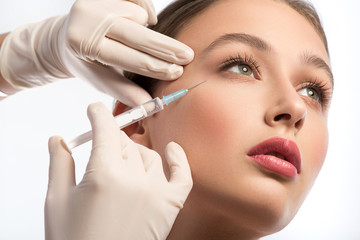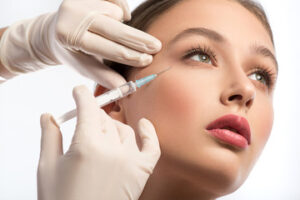Preventive dental care establishes and maintains good oral health to reduce the risk of serious oral diseases. It includes daily hygiene procedures, a healthy diet, routine oral exams, and professional cleanings.

The cornerstones of preventive dental care are brushing with fluoride toothpaste, flossing, and regular professional dental cleanings. These remove the bacterial film called plaque that eats away at your teeth, forming tooth decay and gum disease. Click https://bocadentallasvegas.com/ to learn more.
The mouth is a breeding ground for dangerous bacteria, and it’s important to keep it clean to prevent disease. The best way to do this is by practicing good oral hygiene and getting regular checkups from our team. We’re here to help you fight tooth decay and other dental issues before they cause major problems for your oral health and overall well-being.
Tooth decay is caused by an invisible film of bacteria that sticks to your teeth and gums, consuming sugar and producing acid that damages your teeth and gums over time. Eventually, this acid hardens into tartar, which can only be removed by your dentist. This is why brushing and flossing regularly and seeing your dentist every six months for a checkup and cleaning are so important.
With Preventive dental care, we’ll perform X-rays of your neck and jaw to identify potential problems early so we can intervene before they worsen. We’ll also teach you about good oral hygiene habits and offer fluoride treatments, which strengthen teeth and reverse early decay. We’ll also recommend avoiding acidic foods and using a mouth guard during certain sports to minimize damage to your teeth.
Preventive dentistry helps you avoid serious dental and systemic health problems that can be extremely costly to treat later. It’s important to remember that an ounce of prevention is worth a pound of cure, so we strongly encourage you to schedule your next dental appointment today!
You can do many things to prevent tooth decay, including maintaining a healthy diet, avoiding acidic foods, drinking plenty of water, and limiting your intake of sweets. It’s also important to visit your dentist at least twice a year for a cleaning and inspection to remove any plaque before it can harden into tartar. Additionally, fluoride treatments can protect the teeth from decay and even reverse the early stages of tooth decay if you receive them before the enamel disintegrates. Dental sealants are a great option to consider as well since they can protect the chewing surfaces of back teeth that are hard to reach with a toothbrush.
Gum disease is the inflammation of one’s gum tissue, which can ultimately lead to tooth loss. It can be caused by a buildup of plaque on and between teeth, but it may also be brought on by poor oral hygiene, illness, pregnancy, or diabetes that isn’t under control. While gum disease isn’t completely curable, it can be reversed and stopped in its early stages. It can also be prevented with preventive dental care, which includes routine dental cleanings and visits to the dentist or hygienist.
The best way to avoid gum disease is by practicing good oral hygiene daily, which involves brushing, flossing, and using mouth rinses containing fluoride. It is also a good idea to avoid sugary foods and drinks, especially those that contain fructose, as these can feed the bacteria that cause plaque. A balanced diet, proper weight management, and quitting smoking can also help. In addition to these measures, visiting your dentist regularly and following their instructions for brushing and flossing is important.
In its earliest stage, known as gingivitis, gum disease is reversible. However, if it isn’t treated, it can advance to irreversible periodontitis, which can lead to severe bone and tissue loss. The most common signs of gum disease include puffy gums, red when the teeth are touched, or blood on your toothbrush after brushing.
During dental cleanings and exams, your dentist or hygienist can remove any hardened plaque and tartar you may have missed with your own brushing and flossing routine. They can also teach you the proper techniques for these tasks and provide an effective at-home oral care routine to keep your teeth and gums healthy. They can also spot any potential problems and treat them before they become more serious, such as gingivitis or gum disease. Studies also show a connection between gum disease and general health conditions, including strokes, heart disease, and Alzheimer’s. This is another reason why visiting your dentist regularly and practicing preventive dental care is so important.
Many forms of cancer can form in the mouth. If caught early, these can be treated with relative ease. However, if detected late, these cancers can spread to other body areas and have deadly consequences. This is why preventive dental care is so important.
Oral cancer can be prevented with regular oral examinations, which include a screening for tissue changes in the lips, tongue, cheeks, tonsils, and floor of the mouth. It is also important to avoid habits that may increase the risk of oral cancer, such as smoking or chewing tobacco and excessive sun exposure. It is recommended that everyone over the age of 18 schedule a screening for oral cancer at least once per year.
During the screening, the dentist will feel around your lips, cheeks, neck, and head for any abnormalities. They will also check your jaw for unusual lumps or bumps and your mouth for any discolored, splotchy tissue areas. In addition, the dentist will review your medical history to look for signs of other health problems that can often be spotted at an early stage by a trained professional.
The patient should be referred to an oncologist for further evaluation and treatment if any precancers are found. This may include a biopsy of the area. Once the diagnosis is made, the doctor will develop a plan to treat the cancer and prevent its recurrence.
Some head and neck cancers, including oropharyngeal, are often symptomatic and can manifest as jaw pain, difficulty swallowing, persistent sore throat, hoarseness, weight loss, or numbness in the mouth or chin.
Dental disease is a major risk factor for cardiovascular (CVD) disease, which can cause heart attacks and strokes. The good news is that many of these diseases are preventable by following a regimen of daily brushing, flossing, eating healthy foods, and regular dental checkups. These practices should start in childhood and continue throughout life. Unfortunately, the lack of affordable dental insurance has forced many Americans to delay medical and dental care until they have a serious problem that may be too costly to treat. This can result in progressive dental disease and various health-related problems such as high hospital bills, expensive treatments, and missed work.
More than 132 million people lacked dental insurance in 2010. Many of these individuals are seniors whose oral health declines with age. Several studies suggest that poor oral health is associated with higher rates of chronic diseases such as diabetes and vascular disease. Moreover, the relationship between poor oral health and lower socioeconomic status is a significant public health issue. The researchers conclude that a concerted effort to improve access to dental care is needed to reduce the burden of oral and systemic diseases and related costs.
Preventive dental care includes various treatment services to keep your gums, teeth, and tongue healthy. Typically, these treatments include routine dental exams, tooth cleanings, and fluoride treatments. X-rays are also considered preventive, though some insurers may only cover these tests for children under certain ages. These procedures can catch early signs of disease and help you avoid more costly and complex treatments.
Some dentists focus on preventing oral and systemic diseases by promoting a holistic approach to overall health and wellness. They often call themselves functional, holistic, or integrative dentists. They can be found in most dental practices and can make the connection between your oral health and your whole body. See one of these dentists to assist with your preventive dental care routine, which is important. They can teach you and your family to practice good dental hygiene and a healthy diet, which will go a long way toward keeping the smile on your face as bright as ever.


 Face Botox minimizes the appearance of lines and wrinkles by temporarily relaxing muscle activity. It is most effective on dynamic wrinkles created when you smile, frown, or squint. Repeated motions cause the muscles to tighten and create creases in the skin, eventually becoming permanent. While fillers work better on static lines, Botox is a great option for dynamic wrinkles.
Face Botox minimizes the appearance of lines and wrinkles by temporarily relaxing muscle activity. It is most effective on dynamic wrinkles created when you smile, frown, or squint. Repeated motions cause the muscles to tighten and create creases in the skin, eventually becoming permanent. While fillers work better on static lines, Botox is a great option for dynamic wrinkles.